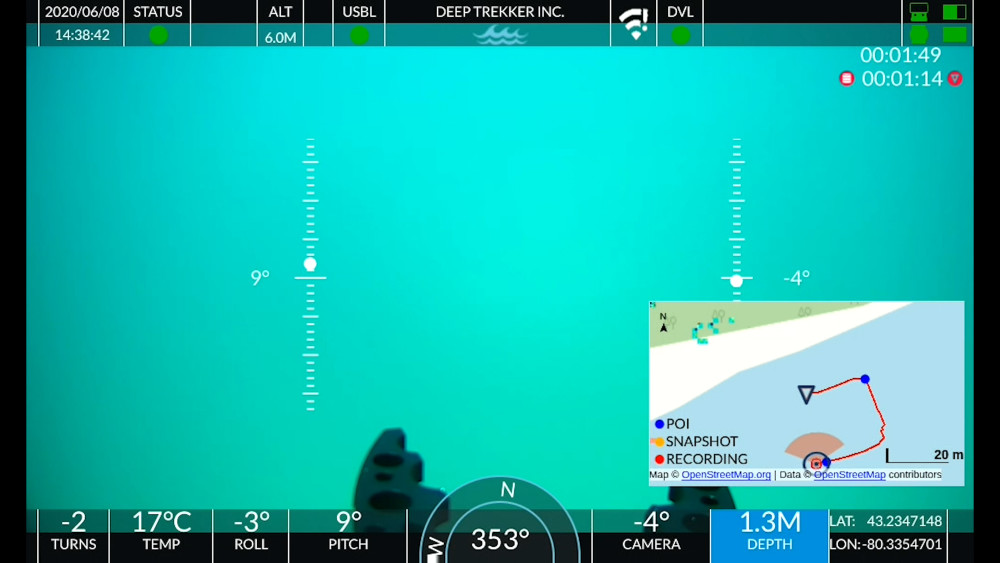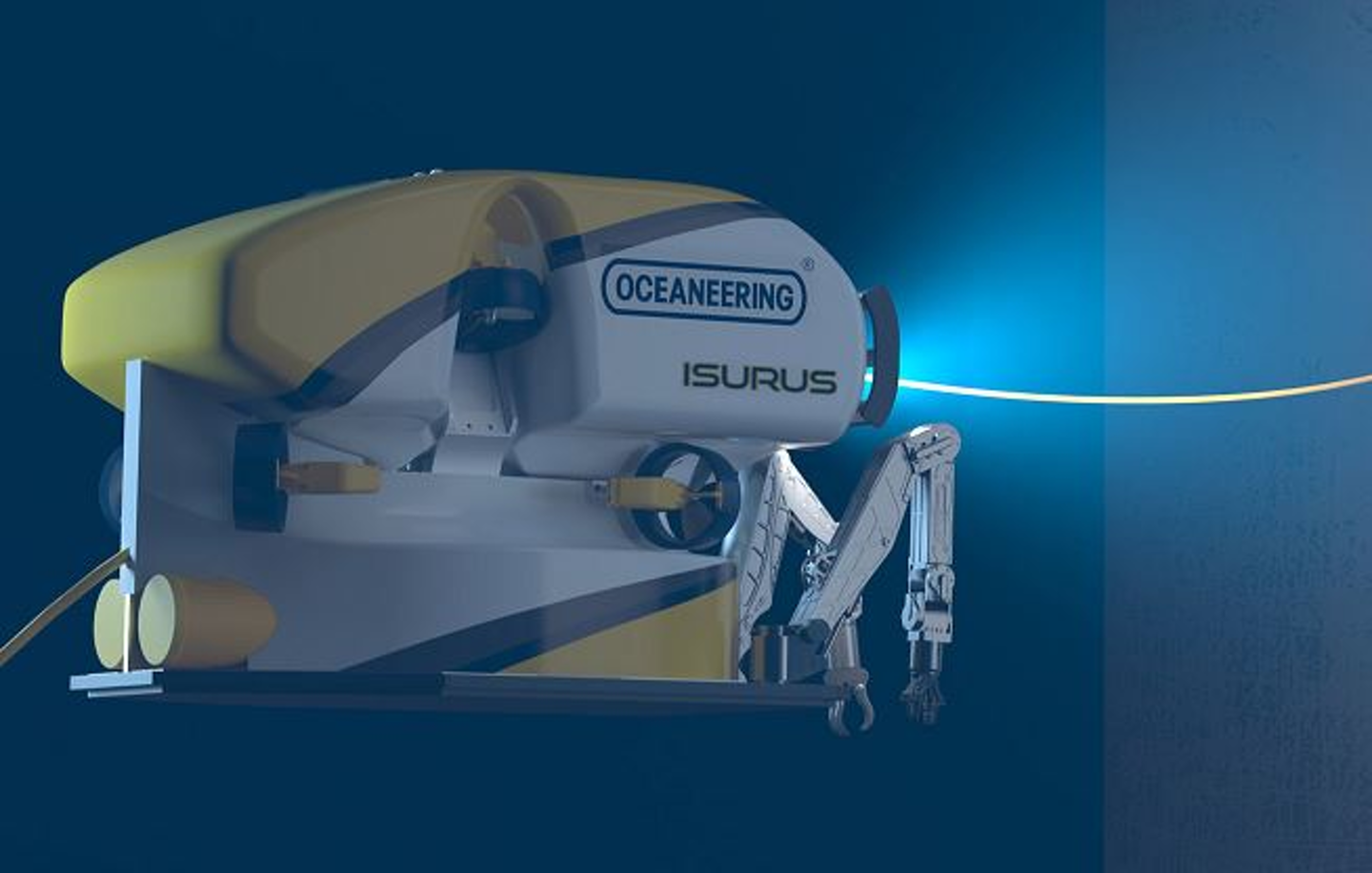Home › Forums › ROV › ROV Technical Discussions › Some questions on umbilical cable
- This topic has 9 replies, 7 voices, and was last updated 13 years, 6 months ago by
Geoff Cook.
-
AuthorPosts
-
April 2, 2011 at 2:17 pm #4179
Rix
ParticipantHi,
I am part of an undergrad student team currently designing a ROV for the exploration of a 1 500m deep submerged mine. I am currently looking for a umbilical cable for our ROV. We are currently strongly considering using a neutral buoyant cable and the size of the ROV will probably be around 2 feet by 1 feet and weight less than 30 kg.
We would like to have a cable capable of transferring power to the ROV and data from many sensors such as Camera, Sonar, Accelerometer, Gyroscope, Thermometer and Pressure sensor. However, there is still a lot I don’t understand about cable and I would like you to give me any kind of advice or technical help you can.
1 – Number and type of cores
I see different possibility for the transfer of data. It could be fibre optic single-mode with on-board processing/switching of data or a multi-mode with different frequency for each signal. The same could apply for copper cable. I’m pretty sure camera/sonar will need their own core while other signal could be mixed together.
1.1 – What is the standard way of doing so in the industry?
1.2 – How big is the difference in speed, bandwidth and cost between fibre optic, single and double core, and copper core?
This might be more a hobbyist question, but what do you think about RS-485?2 – Twisted pairs and coaxial
2.1 – From my understanding, twisted pairs are used to cancel electromagnetic forces. Then, is it useless if I’m not supposed to work close to any electromagnetic sources?
2.2 – What are coaxial cables used for? Can it be used for power and data transfer? Are they expensive?
3 – Voltage drop
3.1 – About the voltage allowed drop, my understanding is that you need a set amount of voltage on board (let’s say, voltage of your motor) and you have a fixed voltage at source. Then you just do the subtraction + a certain margin of security. Am I correct?
4 – Buoyant vs. Armoured cable
4.1 – Since we are visiting a mine, the environment will be pretty rough and the cable needs to be tough enough. Also, we don’t need to tow the ROV and would really need a neutrally buoyant cable so the ROV doesn’t need to much force to pull the cable. I’m not quite sure if the cable can be buoyant and armoured at the same time. What would be the best solution (Kevlar strength member, helical wire around the outside,steel galvanised…)?
I know there are a lot of questions but I’ll take every little piece of help you can give me, the more I know, the best it will be for me. I will also be really thankful if you forward me to any source of information related to all of this. A big part of my problem is that we have a low budget and I don’t really know the impact of each decision on the final cost of the cable.
Big thanks to all of you, have a Nice Day 😀
Rix
April 11, 2011 at 2:19 pm #30737Rix
ParticipantHi again,
I would really be thankful if anyone could give me some help!
Thanks!
April 11, 2011 at 2:32 pm #30738Scott Beveridge
ParticipantHi again,
I would really be thankful if anyone could give me some help!
Thanks!
Have you tried contacting: Nexis, Boston Cable, Jacques Rotork, or any other major cable, tether, and umbilical manufacturers yet? They could pdf you the specs of many different types of "cables".
April 11, 2011 at 2:53 pm #30739Savante
ParticipantDo you have any information as to the likely configuration of your mine shaft?
April 11, 2011 at 4:17 pm #30740Sit Rep
ParticipantAs Savante has asked a lot depends on the configuration of your mine shaft e.g. is it a decline or vertical, how much excursion is required from the "shaft"
i.e. if the shaft was vertical quite heavy cable could be used to support a TMS (tether management system) which allows for greater cable capacity in terms of copper conductors before taking the ROV into consideration
1. Fibre would be the preferred option for data comms due to weight considerations for a small ROV with a multiplexer using multi-mode fibre
If you use a TMS you can minimise the weight of copper required in the actual ROV umbilical eg 1100VAC from surface down the main lift umbilical stepped down to 220VAC or less for the ROV with the transformer in the TMS further reducing weight on the ROV. AC is used vs DC as it is much more efficient and therefore requires smaller cable cross sectional area.
2. Twisted pairs are used to improve the noise immunity of the cable i.e. cancel external emfs and are standard throughout industry (of all types)
Co-axial cable is also used for noise suppression and transmission of signals at higher frequencies however it is heavy per unit length compared to fibre. In an ROV it is normally only used for transmission of video signals. Low voltage DC power can also be used over co-ax cable but it should be de-coupled from the video signal e.g. using capacitors in series with the signal path
3. Voltage drop is due to resistance of the cable per unit length and therefore using a larger cross sectional conductor minimises this however this obviously increases weight another reason for using high voltage AC and stepping it down at the ROV. So, because you are using AC and transformers it is more a case of multiplication/division than subtraction.
Hope it helps!
April 13, 2011 at 2:46 am #30741Rix
ParticipantAs Savante has asked a lot depends on the configuration of your mine shaft e.g. is it a decline or vertical, how much excursion is required from the "shaft"
i.e. if the shaft was vertical quite heavy cable could be used to support a TMS (tether management system) which allows for greater cable capacity in terms of copper conductors before taking the ROV into consideration
The main shaft is quite vertical, around 72°, even if it is not in a straight line. However we need to launch the ROV from a sidepath so we need to get to the main shaft first. Bringing a TMS would not be feasible i think.
1. Fibre would be the preferred option for data comms due to weight considerations for a small ROV with a multiplexer using multi-mode fibre
I agree that fibre seems to be a good idea. Could I bring all the informations from only one fibre optic ? Camera and sonar included ?
Also, I heard that fiber optic are very likely to break, is it reliable in ROV cable ?
If you use a TMS you can minimise the weight of copper required in the actual ROV umbilical eg 1100VAC from surface down the main lift umbilical stepped down to 220VAC or less for the ROV with the transformer in the TMS further reducing weight on the ROV. AC is used vs DC as it is much more efficient and therefore requires smaller cable cross sectional area.
I will probably need between 24V and 50V on board with around 3-4000W. Is it feasible with 120V or 240V or i really need to get to higher voltage ? Again, I don’t think i’ll use a TMS so I don’t think i would use 1100V or such.
2. Twisted pairs are used to improve the noise immunity of the cable i.e. cancel external emfs and are standard throughout industry (of all types)
Do twisted pairs only remove noise from external emfs ? I guess it is not much more expensive so it’s good to have it ?
Your post was really helpful,
Thanks a lot! I hope to hear from you again.
————-
Have you tried contacting: Nexis, Boston Cable, Jacques Rotork, or any other major cable, tether, and umbilical manufacturers yet? They could pdf you the specs of many different types of "cables"
I already contacted some dealers but i want to understand better my needs and the differents spec before trying to get the exact good cable.
April 13, 2011 at 9:18 am #30742DANFROV
KeymasterHere are some links that could be of use.
http://www.subseavision.co.uk/ROV_Tunnel_surveys.htm
http://www.tunnelinspections.com/inspections.html
danFrov
May 4, 2011 at 3:35 pm #30743Col
ParticipantCouple of quick points that jump out:
1500m would be right at the limit for reliable 485, depending on your budget it would probably be worth muxing the data into a fibre top and bottom side. Unless you have some serious kit on there, I doubt bandwidth would be an issue.
You will be transmitting close to electromagnetic sources, the conductors themselves in the cable will generate a magnetic field.
Coax is a shielded conductor used to prevent interferance. It is generally a data conductor. The signal travels down the core and the braided ‘shield’ is usually earthed.
Volt drop depends on the length (aka resistance) of the cable and the current flowing. Higher resistance and higher current equals higher volt drop. If you know any electronics think of the cable as a resistor, dropping a voltage across it like in a potential divider. The standard way is to calculate the required voltage bottom side, the supply voltage topside and use the appropriate transformer (usually tapped for easier adjustment).
May 4, 2011 at 3:42 pm #30744Col
ParticipantAnother thing 😛
Fibres are not so fragile. The trick is terminating them correctly, and securing them in moving equipment. They are normally placed in the centre of a bunched cable to minimise their bending radius. The main problem is the kit for terminating and splicing them is very expensive. Like I say, I would not imagine you would have any problems with bandwidth on a single fibre unless you had some very hi uplink equipment on their (Seabats etc).
June 28, 2011 at 3:18 am #30745Geoff Cook
ParticipantEven with a limited budget, it sounds like you have an expensive project on your hands. Unless you get materials donated, I can’t see it being done for anything under 6 figures. What is the ballpark budget you are working with?
-
AuthorPosts
- You must be logged in to reply to this topic.



